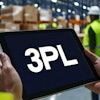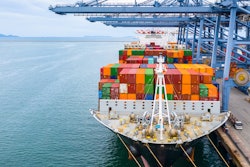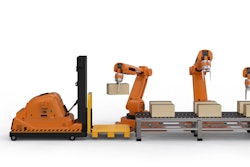
There is no doubt that the millions of truck drivers around the world are some of the most essential contributors to the supply chain – you might go as far as to call them the heart of the global supply chain. Without a driver, freight just doesn’t get moved.
That means that supporting and empowering drivers is one of the most imperative, core aspects of a carrier’s operation. Nearly everything a carrier does revolves around ensuring that drivers are safe, supported and productive.
From an industry perspective, there is so much that can be done to improve the quality of life for drivers by eliminating those areas of frustration from their jobs. Whether it is waiting at a dock, looking for parking spots, completing manual processes – these little annoyances often add up to contributing to drivers’ dissatisfaction with the job.
Technology can be a great enabler, finding ways to shift those frustrating events each day into a more driver-friendly experience. The best freight technologies are designed with drivers in mind, and should be built in a way that helps make their jobs safer, more productive and, frankly, more enjoyable.
Safety
Fleet safety is a value, and it starts with culture, rolls into teamwork, is driven home in training and reinforced with technology. From a technology standpoint, solutions like Advanced Driver Assistance Systems, lane departure warnings, fatigue monitoring and video systems can each be crucial to keep drivers safe both in real-time and after the fact as means of enhancing the driver coaching process.
A few minutes spent on coaching can go a very long way toward promoting positive behavior change and helping drivers hone their skills and take pride in operating with a high level of safety. These coaching opportunities should not only be addressing negative behaviors – it’s also critical to recognize and reward positive actions, too.
Technologies that automate driver workflows can also benefit safety – features like electronic logs that capture key Hours of Service (HOS) information and geofences that automatically trigger an action on a device. Likewise, navigation systems that are built specifically for commercial vehicles can help increase safety and streamline the journey for drivers along their routes.
Productivity
Many of the headaches that drivers face are the result of bad data, ineffective coordination between shippers and carriers and a lack of the right integrations between in-cab and back office platforms.
What drivers want is relatively easy to accomplish with the right tech solutions and the right integrations to connect them: they want accurate dispatch information, timely plans and to find a trailer, loaded or empty, on the first try. A driver’s job is to drive the truck, be safe and make a living for their families. So, we have to make sure that everything we’re doing sets them up for success and the right technology can help enable that.
Not only does this streamlined flow of information help drivers, it can translate back to carriers and shippers, too. By driving waste out of the supply chain, shippers can optimize freight coverage and carriers can make more money through better utilization of their drivers and assets. The end result? A more efficient and productive supply chain for everyone that it serves.
Happiness
As the old adage goes, if you love your job, you’ll never work a day in your life. There is a lot more that supply chain stakeholders could be doing to help drivers love their job – and technology can be a part of that.
Utilizing freight technology to optimize procurement, load matching and dispatch can go a very long way toward making a driver’s day more enjoyable – perhaps it’s looking for locations they like going to or finding a way to get them home for the weekend so they can spend time with their family.
Other on-the-job frustrations like not being able to find an empty trailer, having bad appointments, wasted dwell time, and in-transit delays are all irritating for drivers. These pain points are typically outside of the driver’s control and can be addressed through better integrated systems and data, or through optimized workflows.
There is a long way to go in this regard, but in a connected supply chain, drivers can use technology to automate workflows, increase their performance and connectivity to increase job satisfaction.
Final Thoughts
As an industry, we often focus on trying to solve the driver shortage by enhancing recruitment and retention. Improving drivers’ quality of life and quality of the job will pay dividends for carriers in their driver retention efforts. Technology can play a crucial role in that, to simplify workflows, remove pain points and make sure we’re not wasting drivers’ time.
Technology for technology’s sake isn’t worthwhile: it truly needs to serve a purpose. I suggest that purpose should ultimately revolve around empowering and supporting drivers with a better experience, wherever the road takes them.




















